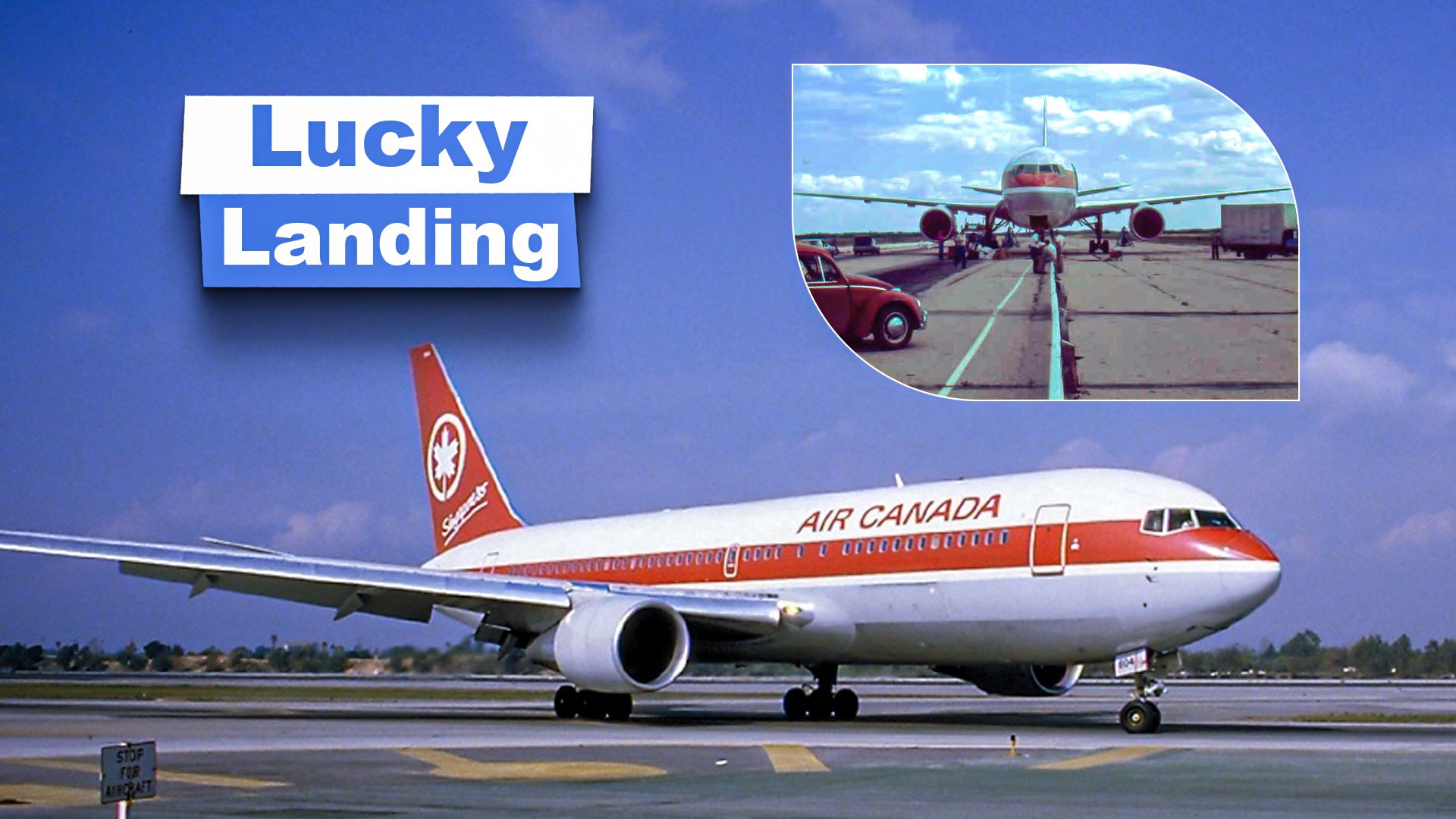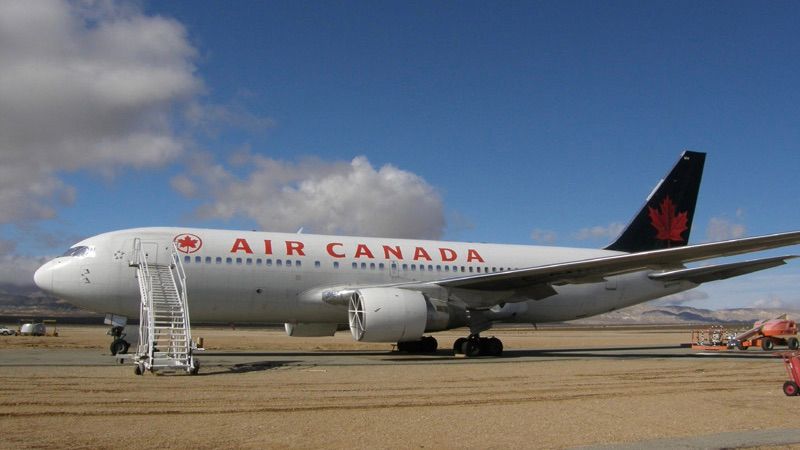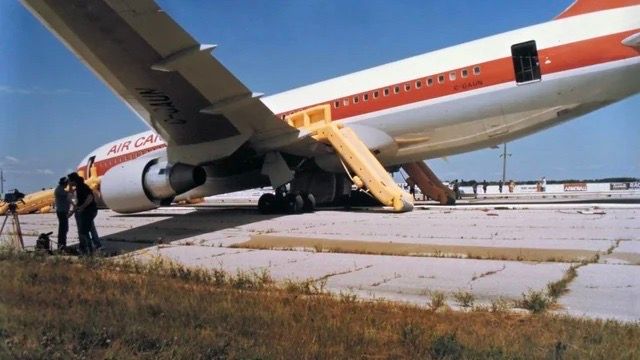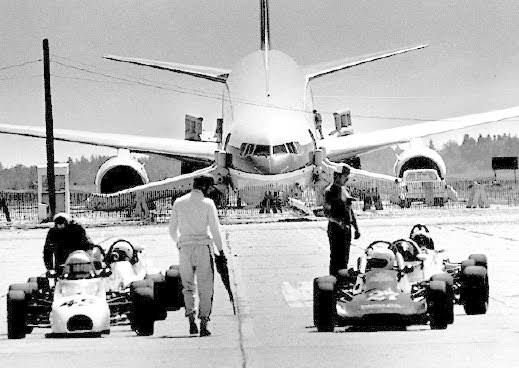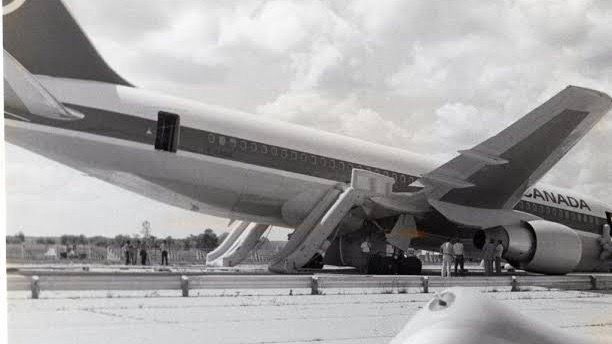Summary
- Faulty fuel gauges was just one issue that led Air Canada Flight 143 to run out of fuel mid-air.
- The crew handled engine failures and emergency landing efficiently.
- The “Gimli Glider” incident highlighted aircraft maintenance and dispatch errors.
It was Saturday, July 23rd, 1983. Air Canada flight 143 was getting ready to depart Montreal before traveling on to Ottawa and Edmonton. The new Boeing 767 registered C-GAUN had 61 passengers on board and 8 crew. The captain was Robert Pearson and the first officer was Maurice Quintal. There were six cabin crew that day including Susan.
Pre-flight checks
At the handover, with the previous flight’s pilots, they discussed the faulty Fuel Quality Indicator Sensor (FQIS). The back-up FQIS was also not functional. The captain took on enough fuel to reach Edmonton without needing to refuel in Ottawa. However, this new 767 had metric measurements that not everyone was aware of. The captain took the dripstick measurement and converted it to centimeters, liters and kilograms.
He asked the refueler what the conversion rate was for fuel density and it was in pounds, not kilos. This was entered into the flight management computer which tracked the amount of fuel in kilos. The 767 flew on to Ottawa without issue, where the fuel was measured again in the same way. The aircraft appeared to have enough fuel to reach Edmonton, so no fuel was added in Ottawa.
The cabin crew had completed their checks and the safety demonstration, pre-flight. They’d secured the cabin as they had always done. They provided inflight service to the passengers onboard and the flight was quiet with so few passengers. Everything was normal and nothing seemed to suggest something was awry.
What happened next?
The 767 was cruising at an altitude of 41,000 feet, over Red Lake, Ontario. It was just after 20:00. Suddenly, the low-pressure warning amber light started to flash in the cockpit and sounded. It indicated that there was a fuel pressure problem on the left side. Seconds later, it sounded again saying there was an issue on the right side. The flight crew immediately decided to divert to Winnipeg.
The flight crew were flummoxed, but there was no time to think as the left engine failed seconds later. They prepared for a single-engine landing. Just as they declared their intentions to Winnipeg Air Traffic Control and tried to restart the left engine, the cockpit warning system sounded again. There was a sound that they had never heard before indicating that all engines were out. The right engine stopped. The 767 had lost all power.
In the cabin
The aircraft shuddered. The lights had gone out in the cabin and there was an eerie silence. The passengers were in shock and disbelief and the cabin crew knew something was drastically wrong, so they headed to their stations to await information. The in-charge crew member was called to the cockpit and informed of the situation.
He made an announcement to the passengers saying that there was a technical issue and they would be landing in Winnipeg and told them to remain calm. Some were scared they would land in Lake Winnipeg. Some wrote notes to loved ones on scraps of paper.
Back in the cockpit
Because they had lost all power, the glass cockpit screens all blacked out and they had minimal flight instruments. The Ram Air Turbine (RAT) deployed under the aircraft’s nose and drives a hydraulic pump to supply power to the hydraulic systems. The pilots searched the emergency checklist for flying with both engines out, but there was nothing.
Luckily, the captain was also a glider pilot and he decided to fly the aircraft at an optimum glide speed. The first officer calculated if they could reach Winnipeg and they could not. The first officer suggested that they land at Gimli, Manitoba, where there was a Royal Canadian Air Force base and the runway was long enough to accommodate the 767. He had served there previously, so he was familiar with it.
Cabin pressure
Back in the cabin, the cabin crew had to prepare for an emergency landing with little time to spare. They would show the brace position, point out the exits and tell the passengers how to prepare themselves for the landing. They positioned Able-Bodied Passengers (ABPs) close to the exit rows to help in the evacuation. The passengers were nervous but the cabin crew tried to calm them. If they were nervous, they could not show it. The cabin was silent as they secured it and solemnly took their jumpseats.
Scary approach
The aircraft slowed on approach and they used gravity to drop the landing gear and the main gear locked in place. The nose wheel gear did not. They were now too fast and they were worried they would run off the runway. The captain performed a side-slip move to increase drag and reduce altitude. During this move, the passengers faced the ground out of one window and the sky out of the next. He was ‘crabbing’ towards the runway, before straightening the aircraft in line with the runway.
Susan’s thoughts
Susan felt the pull of the aircraft leaning to the left and pondered her fate. It was strange to be flying but with no engine noise. She had been flying for ten years and thought of her one-year-old daughter at home and how her husband would cope without her. She thought about her passengers and her responsibilities as being cabin crew. She told herself to stay focused and be professional.
“When I went to finally sit down in my seat, this is where I thought, this is it…”
Susan, cabin crew on flight 143 as told to ‘Mayday’
The unexpected
Little did they know that the RCAF base was no longer and the area was now a racetrack at the Gimli Motorsports Park. The area was full of cars and campers from the Winnipeg Sports Car Club enjoying their day out. The aircraft was starved of fuel, so no one heard it coming. There was no warning. Suddenly, the large jet loomed out of the sky right toward them. They looked on in disbelief.
The cabin crew called their brace commands. As soon as the wheels touched the ground, the captain braked hard. The aircraft skidded and two tires blew out. The unlocked nose wheel gear collapsed and the 767s nose hit the ground. It scraped along the racetrack and friction sent sparks flying high into the sky. Seeing that there were people ahead of them, the captain applied extra braking and finally, they came to a stop, hitting a central guard rail on the track.
Landed safely
It had been 17 minutes since the engines ran out of fuel. The passengers were shocked but started to cheer and applaud. The cabin crew evacuated the aircraft, opening their exits and deploying the slides. All were inflated. Due to the aircraft being nose down, the slides at the rear did not touch the ground and some passengers were injured on egress. There was smoke in the front of the cabin, but there were few passengers sitting there. There was a small fire at the nose of the aircraft but racers and workers with portable fire extinguishers put it out.
“Somebody yelled, people started applauding. We were so grateful. We made it! ”
Susan as told to ‘Mayday’
The Aftermath
There were ten minor injuries and minor damage to the aircraft. All passengers and crew had evacuated successfully. The aircraft was repaired and flew until it was retired in 2005. The incident was nicknamed the ‘Gimli Glider.’ Ironically, maintenance crew were waiting in Edmonton to replace the FQIS.
The official report said that it was not just a mix-up of metrics, but the aircraft ran out of fuel because:
- The fuel gauge was not functioning.
- The aircraft should not have been dispatched without working fuel gauges.
- There should have been a direct check of fuel quantity.
- The maintenance crew had misunderstood and turned off the back-up FQIS.
- The replacement FQIS was not functioning.
- The flight computer required fuel to be entered in kilos; therefore there was only 45% of the fuel required for the trip.
The Aviation Safety Board of Canada reported that Air Canada management was responsible for corporate and equipment deficiencies. They praised the flight crew and cabin crew for their professionalism and skill.

